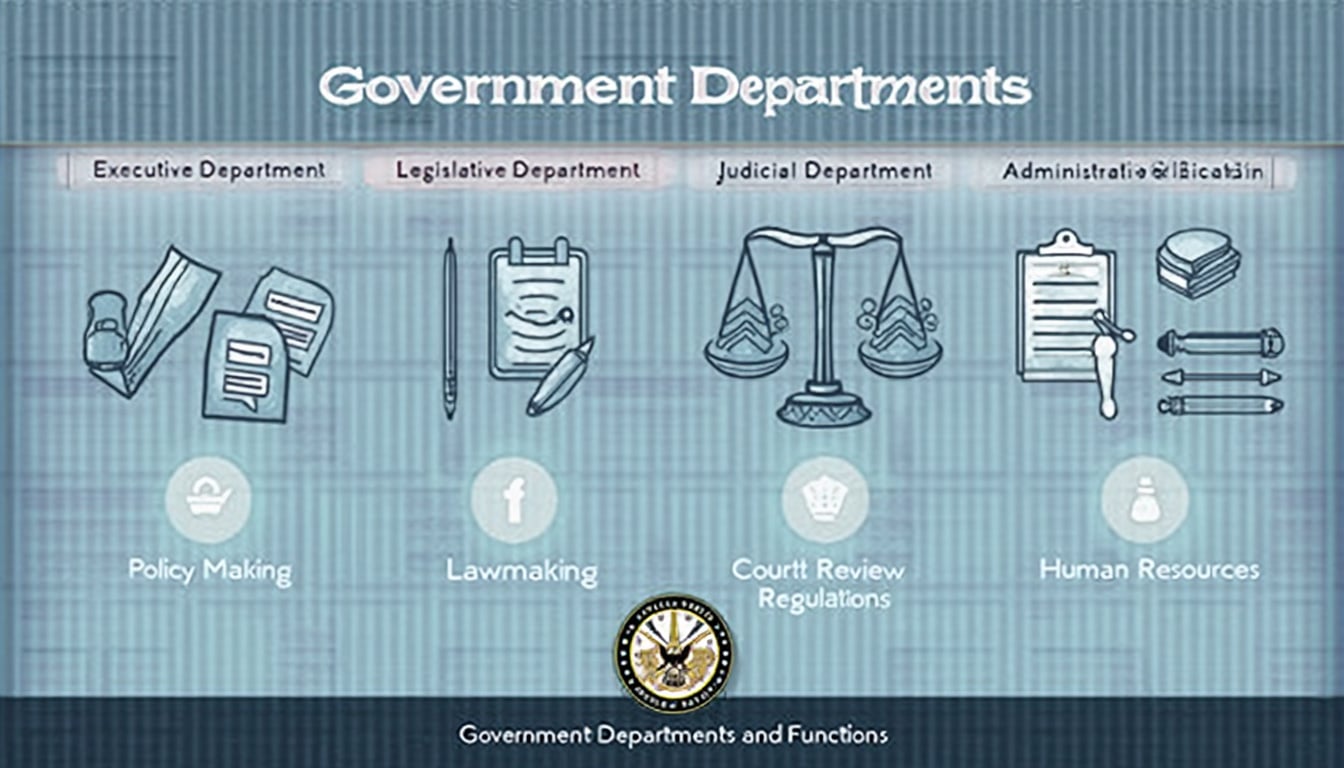The appointment of a former SpaceX executive, Paul McInerny, as the Chief Information Officer (CIO) for the Interior Department marks a significant shift in leadership within government technology. This change comes in the wake of an ongoing realignment prompted by rising tensions around the government’s efficiency efforts. In a time when federal agencies are becoming increasingly scrutinized, McInerny’s background at SpaceX and his fresh perspective could prove critical in navigating the complexities of modern governmental operations and technology. His leadership aims to centralize IT across various bureaus, addressing redundancy, improving service delivery, and ensuring data integrity amidst the challenges posed by the Department of Government Efficiency.
A New Chapter for the Interior Department
Paul McInerny’s journey to the role of CIO represents a larger trend within the federal landscape, particularly under the administration’s current agenda focused on reshaping government operations. Formerly a senior manager in software automation at SpaceX, McInerny takes on the challenge of overseeing technology initiatives at the Interior Department, which governs vital agencies such as the Bureau of Indian Affairs and the National Park Service. His appointment comes after a tumultuous time for the department, characterized by significant executive changes as well as internal controversies related to program access and cybersecurity concerns.

The Impact of Leadership Changes
The cycling of executives within the Interior Department has raised questions regarding the long-term stability of its IT functions. Following the dismissal of several high-ranking officials who opposed providing access to sensitive government systems, McInerny represents fresh leadership aimed at consolidating technological resources. Despite his lack of prior government experience, his background at SpaceX is significant, as it reflects a culture of innovation and data-driven decision-making that many believe is crucial for contemporary governance.
Soldiery, his transition into this critical role will not be without its hurdles. Many within the department are wary of the motivations driving these changes, as the potential for widespread layoffs looms large amidst restructurings and a move towards centralizing information technology. The consolidation effort aims to curb duplication of services and optimize resource distribution, which the Interior Department hopes will lead to improved operational efficiency.
Challenges Under the DOGE Initiative
The DOGE initiative spearheaded by Elon Musk has provoked controversy, particularly relating to its aggressive push to streamline governmental functions. McInerny’s predecessor, Darren Ash, along with other senior leaders, faced backlash when attempts were made to facilitate DOGE’s access to a key payroll system. This reveals the tension between prioritizing operational efficiencies and mitigating risks around privacy and cybersecurity.
With McInerny now at the helm, the Interior Department seeks to ensure a more collaborative environment that cautiously navigates the bureaucratic complexities. Critics voice concerns, suggesting that the drive towards efficiency may overlook critical staffing needs and institutional knowledge loss. The upcoming reorganization, involving direct reporting to Secretary Doug Burgum, offers a blend of hope for streamlined IT functions while also instilling a sense of apprehension among the staff.
Cultural Shift with External Implications
The appointment of McInerny illustrates a notable trend: former executives from groundbreaking companies like SpaceX, Blue Origin, and Virgin Galactic are increasingly taking positions in government. This emerging culture within federal agencies promotes adaptability to advancements in technology, as seen through McInerny’s background at a company that has revolutionized aerospace and space travel.

The Role of Technology in Governance
The Interior Department’s renewed focus on technology couldn’t be timelier given the multifaceted challenges federal agencies face today. As they navigate the landscape shaped by corporations such as Northrop Grumman and Lockheed Martin, the pressure to adopt innovative practices and tools is intensifying. The reality is that governmental operations need to harness emerging technologies to enhance both internal capabilities and public services.
Technological advancements are no longer a luxury but a necessity in managing contemporary challenges—whether they pertain to cybersecurity threats or data management improvements. The introduction of McInerny provides a foundation for leveraging technology as a facilitator of governmental agency capabilities, enabling a proactive approach to pressing issues.
Addressing Future Challenges
As McInerny embarks on his leadership role, he stands at the intersection of innovation and tradition. A hallmark of effective governance will demand that he balances the potential of adopting modern methodologies while maintaining respect for established practices within the Interior Department. The main goals revolve around improving efficiency, security, and creating a responsive data environment.
The responsibility of central management of IT across the Interior Department presents a unique opportunity to address redundancies and revitalize a fragmented structure. This will require collaboration with other technological stakeholders across government, including partnerships with companies like Boeing and Raytheon. These established industry players offer valuable insights that can enhance the Department’s strategic direction.
Strategic Planning and Consolidation
The Interior Department’s strategic realignment aims to improve its operational foundation, a move hailed by some as necessary for navigating today’s complex technical landscape. Centralizing various functions from finance to communication demonstrates a commitment to a streamlined operation that emphasizes service delivery. Moreover, as McInerny starts implementing plans, existing challenges will need to be tactfully addressed.

Creating a Unified IT Strategy
A coherent IT strategy will serve as the backbone of the department’s transition into a more technologically advanced agency. Ensuring that aspects such as project implementation and resource allocation are handled effectively without sacrificing critical staffing levels will be the cornerstone of McInerny’s leadership. The goal will be to promote unity across diverse functional areas and create a robust framework that transcends bureaucratic hurdles.
Centralizing functions involves tracing inefficiencies that have historically stymied operational capabilities. Expert analysis from past leaders in well-known organizations, including Orbital Sciences and Rocket Lab, can pave the way for creating a comprehensive approach that continues to prioritize transparency and accountability. This not only fosters trust between the agency and its employees but also enhances public confidence in the department’s ability to effectively manage resources.
Emphasizing Training and Development
Alongside technological improvements, integrating comprehensive training programs will be essential in equipping staff with the necessary skills to adapt to changes. Investing in training can mitigate resistance while encouraging staff to embrace new technologies and methodologies brought to the surface by McInerny’s policies.
By prioritizing skill development, the Interior Department cultivates expertise that can drive innovation and enhance employee morale. A motivated workforce, equipped with both the tools and knowledge to excel, ensures that technology implementation is more successful and aligns with the department’s long-term objectives.
Communications and Transparency
A successful transition to McInerny’s leadership will rely on effective communication and transparency throughout the process. By keeping employees informed and engaged, the Interior Department can foster a collaborative environment that encourages feedback and supplies critical insights into the ground-level dynamics of the agency.
Regular Updates and Employee Engagement
The Interior Department’s active commitment to keeping employees informed about the restructuring process is vital. Regular webinars and briefings will provide an avenue for communication, allowing staff to voice concerns while offering insights that can improve the overall strategy. Highlighting successful digital transformations undertaken by similar organizations can further instill confidence in ministry staff while also showcasing the efficacy of the changes being implemented.
Leadership must remain accessible, emphasizing the importance of creating dialogues where staff feel valued and heard. As technology continues to evolve, building relationships within the department will be imperative to maintaining morale amid transition-related stress.
Public Relations and External Communications
In addition to internal communications, engaging with the public will enhance transparency and trust in the Interior Department’s operations. Utilizing platforms such as Twitter and Facebook to communicate the department’s progress and initiatives can help manage public perceptions and foster a sense of community engagement.
Through transparency and responsiveness, the Interior Department not only communicates its goals but also builds credibility in an era where governmental operations face intense scrutiny. Addressing public concerns with honesty can help bridge gaps between the agency and the communities it serves, enhancing collaboration for future initiatives.







Leave a Reply